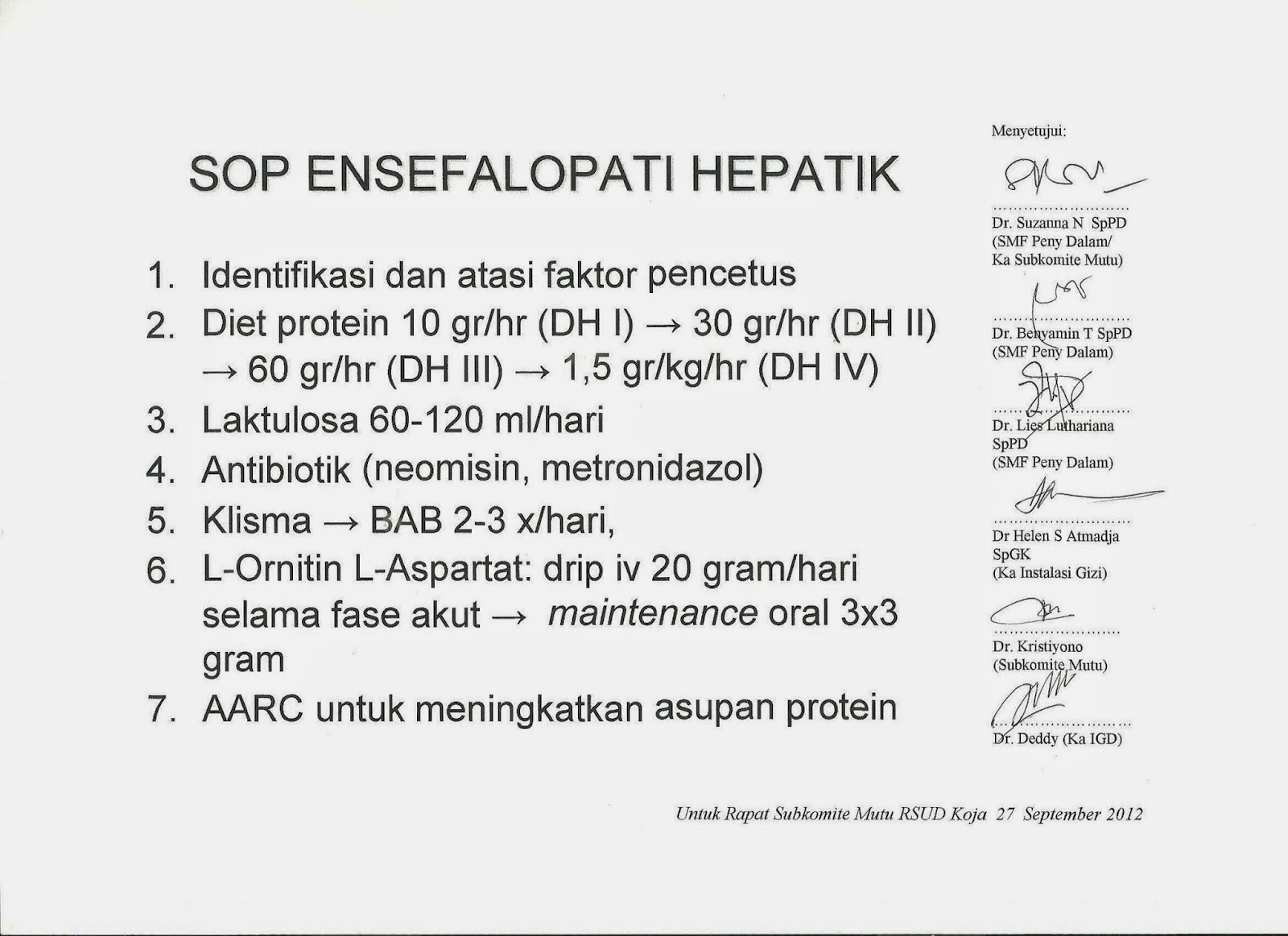Tuesday, April 29, 2014
Sunday, April 27, 2014
Pelengkap Kuliah BLOK GASTROENTEROLOGI 3 Mei 2014
Suzanna Ndraha REVIEW: Kolestasis Intrahepatik
TINJAUAN
PUSTAKA
Kolestasis Intrahepatik
Suzanna Ndraha
Ahli Penyakit Dalam, Konsultan
Gastroenterohepatologi, RSUD Koja,
Jakarta, Indonesia
Abstrak
Kolestasis adalah kondisi
terjadi hambatan aliran cairan empedu secara akut atau kronis. Kolestasis
intrahepatik terjadi akibat defek fungsional hepatoselular, atau lesi
obstruktif traktus bilier intrahepatik. Pada kolestasis intrahepatik didapatkan
ciri klinis dan laboratorium sesuai dengan kolestasis tanpa terlihat obstruksi
duktus koledokus pada pemeriksaan imaging.Yang termasuk kolestasis
intrahepatik antara lain hepatitis kolestasis, hepatitis autoimun, penyakit
hati karena alkohol, dan hepatitis imbas obat, sirosis bilier primer dan
kolangitis sklerosing primer.
Pada tinjauan pustaka ini akan
dibahas pendekatan diagnostik dan tatalaksana kolestasis intrahepatik,
khususnya hepatitis kolestasis, hepatitis imbas obat tipe kolestasis, sirosis
bilier primer dan kolangitis sklerosing primer.
Abstract
Cholestasis
is an impairment of bile formation and/or bile flow which may clinically
present with fatigue, pruritus and jaundice. Cholestasis can be classified to
intrahepatic or extrahepatic type. Intrahepatic cholestasis presents with
clinical and laboratory features of cholestasis without bile duct abnormalities on imaging. Intrahepatic
cholestasis may be caused by cholestasis hepatitis, autoimmune hepatitis,
alcoholic liver disease, drug induced hepatitis, primary biliary cirrhosis and
primary sclerosing cholangitis.
This
review will discuss clinical approach and treatment of intrahepatic
cholestasis, especially cholestasis hepatitis, drug induced hepatitis, primary
biliary cirrhosis and primary sclerosing cholangitis. Suzanna Ndraha.
Kolestasis Intrahepatik
http://www.kalbemed.com/Portals/6/05_207CME-Kolestasis%20Intrahepatik.pdf
 |
| Review: Kolestasis Intrahepatik |
Suzanna Ndraha PENELITIAN: The effect of DLBS1033 in PAD
THE LUMBROKINASE DBLS 1033 EFFECT
IN
PERIPHERAL ARTERY DISEASE
Suzanna Ndraha*,
Fendra Wician*, Henny Tannady*, Helena Yap*, Marshell Tendean*
*. Department of
Internal Medicine UKRIDA Christian University, Jakarta-indonesia
ABSTRACT
Introduction. Lumbrokinase act
as oral anti-thrombotic and thrombolytic is promising to treat cerebrovascular
disease, including Peripheral Artery Disease (PAD). The hallmarks of Peripheral Artery Disease
(PAD) are intermittent claudication, rest calf pain and gangrenous ulcer.
Objective. This study aims
to describe the clinical picture and risk factors of intermittent claudication
in Koja Hospital, and to ascertain the efficacy of lumbrokinase DBLS1033 in
patients with intermittent claudication.
Methods. The study was done
among 20 patients in Koja hospital Internal Medicine outpatient department (IM-OPD)
from April 2013 to August 2013. This is a preliminary RCT study. Patients were
interviewed and measured for Ankle Brachial Index (ABI), they were divided into
two groups. Group A was given lumbrokinase DBLS1033 (DisolfÒ) tablet, 1 tab 3 times daily for 2 weeks and group B was
given placebo. After 2 weeks, ABI were re-measured. Statistical analysis were
done using SPSS 20.
Results. Among 20 subjects with ABI £ 0.9, 90% were woman, mean age 54.4±7.2 yrs. Independent risk factors
related with PAD were: hypertension, diabetes, dyslipidemia and lack of
exercise. Before treatment, ABI in DBLS1033 group was 0.81±0.05 and 0.82± 0.04
in control group (p=0.73). After treatment, ABI in DBLS1033 group was 1.08±0.7
and 0.78±0.03 in control group (p=0.00). There was significantly difference in improvement
of ABI between DBLS1033 group and control group (0.27 vs -0.04, p=0.00). Within DBLS1033 group, mean ABI pre-test 0.81±0.05 and post-test
1.08±0.17 (p=0.00),
ABI improvement 0.27±1.6. Within control group, the mean ABI pre-test 0.82± 0.04 and
post-test 0.78±0.03(p=0.02),
with ABI reduction 0.04±0.02
Conclusion. PAD patients
in Koja Hospital were 90%
woman, mean age 54.4 years old. Independent risk factors
for PAD were hypertension,
diabetes, dyslipidemia and lack of exercise. Lumbrokinase DBLS1033 showed to
improve ABI in patients with intermittent claudication.
Artikel Lengkap Penelitian ini dipublikasi di Jurnal
MEDICINUS
Scientific Journal of Pharmaceutical Development and Medical Application
vol 27 no 1 April 2014
ISSN 1979-39x
http://cme.medicinus.co/mod/resource/view.php?id=17
 |
| Penelitian DLBS |
Suzanna Ndraha REVIEW: PENYAKIT REFLUKS GASTROESOFAGEAL
PENYAKIT
REFLUKS GASTROESOFAGEAL
Suzanna Ndraha
Konsultan Gastroenterohepatologi
Departemen Penyakit Dalam Fakultas
Kedokteran UKRIDA Jakarta
Refluks
gastroesofageal sebenarnya merupakan proses
fisiologis normal yang banyak dialami orang sehat, terutama sesudah makan.1
PRGE atau Penyakit refluks gastroesofageal(gastro-esophageal reflux disease, GERD) adalah kondisi patologis
dimana sejumlah isi lambung berbalik (refluks) ke esofagus melebihi jumlah normal, dan
menimbulkan berbagai keluhan.1,2 Refluks ini ternyata juga
menimbulkan simptom ekstraesofageal, disamping penyulit intraesofageal seperti striktur,
Barrett's esophagus atau bahkan
adenokarsinoma esophagus.1,2
PRGE dan
sindroma dispepsia mempunyai prevalensi yang sama tinggi, dan seringkali muncul
dengan simptom yang tumpang tindih sehingga menyulitkan diagnosis. Dispepsia
non ulkus, di masa lalu diklasifikasikan menjadi 4 subgrup yaitu dispepsia tipe
ulkus, dispepsia tipe dismotilitas, dispepsia tipe refluks dan dispepsia non
spesifik. Namun kemudian ternyata dispepsia tipe refluks dapat berlanjut
menjadi penyakit organik yang berbahaya seperti karsinoma esofagus. Karena
itulah para ahli sepakat memisahkan dispepsia tipe refluks dari dispepsia dan
menjadikan penyakit tersendiri bernama penyakit refluks
gastroesofageal.3
Prevalensi
PRGE di Asia, termasuk Indonesia, relatif rendah dibanding negara maju. Di
Amerika, hampir 7% populasi mempunyai keluhan heartburn, dan 20-40% diantaranya diperkirakan menderita PRGE.
Prevalensi esofagitis di negara barat berkisar antara 10-20%, sedangkan di Asia
hanya 3-5%, terkecuali Jepang dan Taiwan (13-15%).2,4 Tidak ada
predileksi gender pada PRGE, laki-laki dan perempuan mempunyai risiko yang
sama, namun insidens esofagitis pada laki-laki lebih tinggi (2:1-3:1), begitu
pula Barrett's esophagitis lebih
banyak dijumpai pada laki-laki (10:1).1 PRGE dapat terjadi di segala usia, namun
prevalensinya meningkat pada usia diatas 40 tahun.1
 |
| REVIEW PRGE |
Thursday, April 17, 2014
Subscribe to:
Posts (Atom)














































